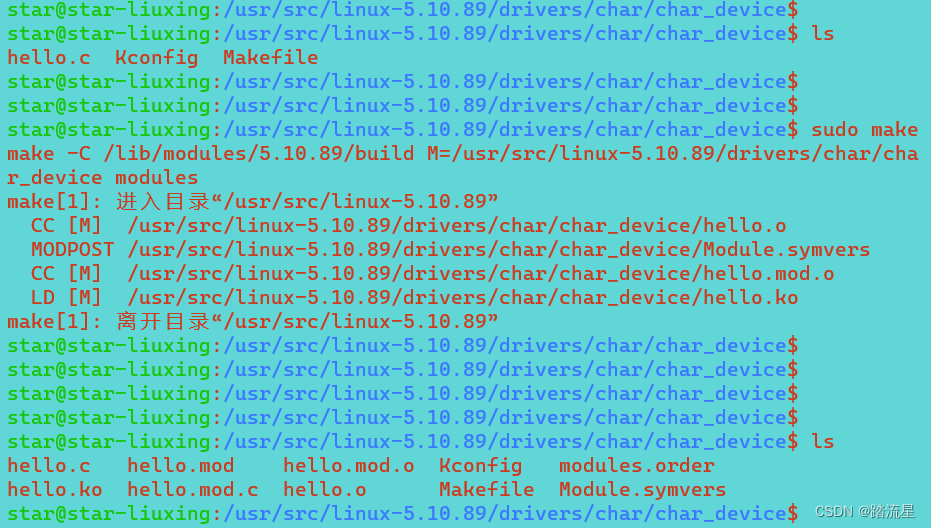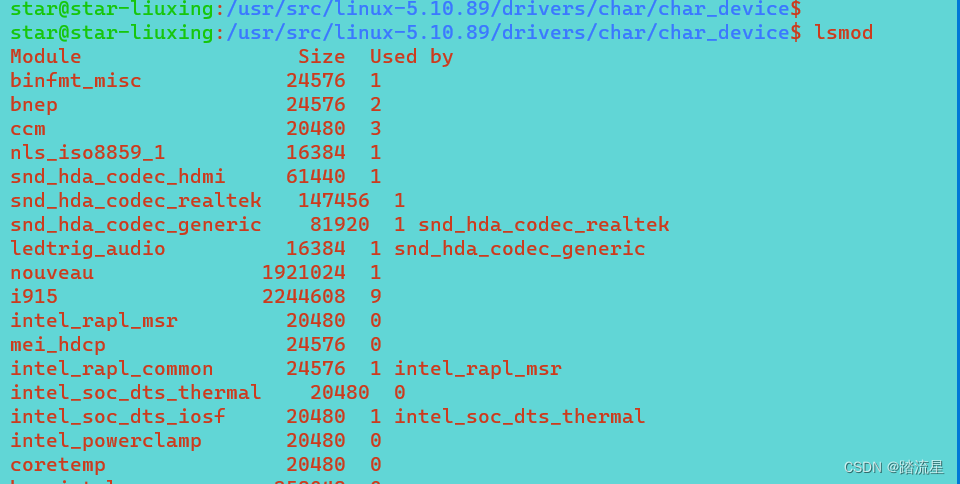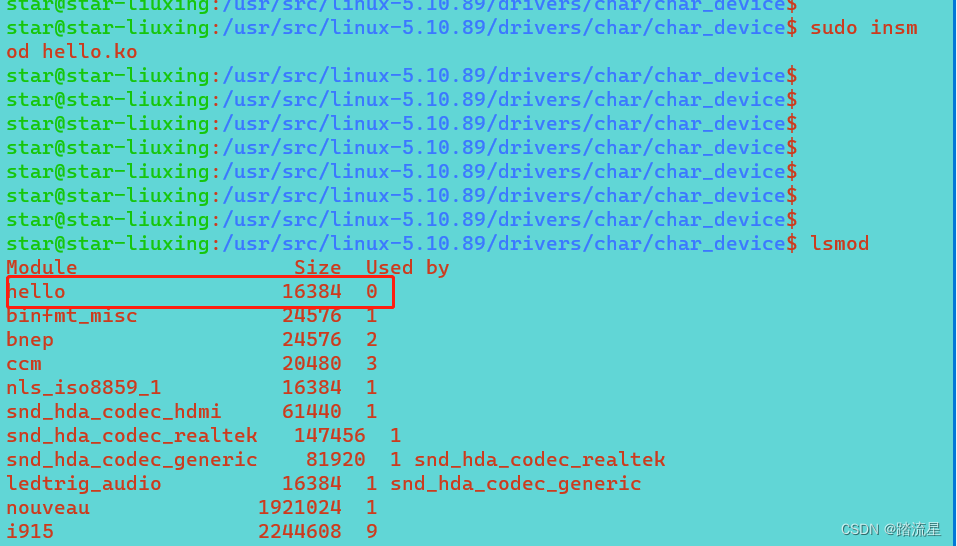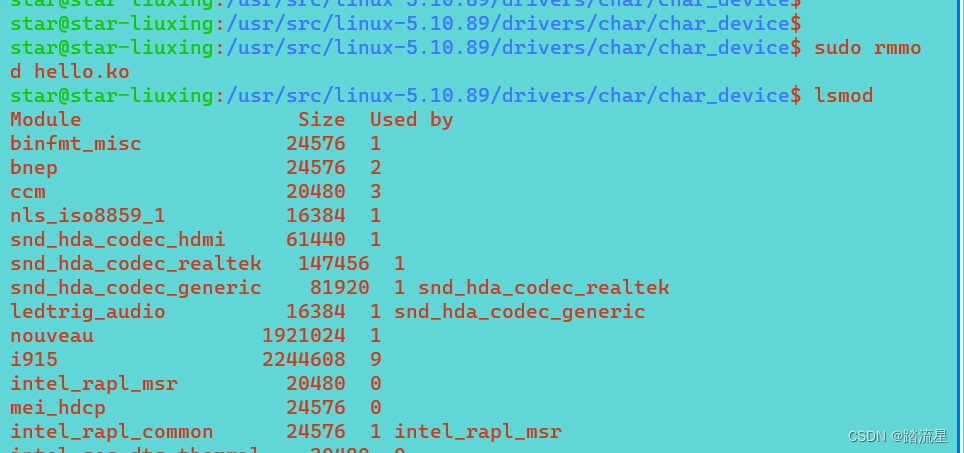第一步:编写驱动文件
#include <linux/init.h>
#include <linux/module.h>
#include <linux/of_device.h>
#include <linux/platform_device.h>
static int hello_probe(struct platform_device *pdev)
{
printk("probe hello\n");
return 0;
}
static int hello_remove(struct platform_device *pdev)
{
printk("remove hello\n");
return 0;
}
static const struct of_device_id hello_of_match[] __maybe_unused = {
{ .compatible = "microchip,hello", },
{ }
};
MODULE_DEVICE_TABLE(of, hello_of_match);
static struct platform_driver hello_driver = {
.probe = hello_probe,
.remove = hello_remove,
.driver = {
.name = "hello",
.of_match_table = of_match_ptr(hello_of_match),
},
};
module_platform_driver(hello_driver);
MODULE_LICENSE("GPL");
MODULE_AUTHOR("Star liuxing");
MODULE_DESCRIPTION("Microchip PIC32 RNG Driver");
第二步:编写 Makefile 文件
这里 Makefile 文件的内容格式基本是固定的
KVERS = $(shell uname -r)
obj-m += hello.o
build: kernel_modules
EXTRA_CFLAGS = -g -o0
kernel_modules:
make -C /lib/modules/$(KVERS)/build M=$(CURDIR) modules
clean:
make -C /lib/modules/$(KVERS)/build M=$(CURDIR) clean
第三步:编写 Kconfig 文件
Kconfig 文件在这个驱动里面是可有可无的,因为我们是把驱动编译成模块的
config HELLO
bool "HELLO driver support"
第四步:在 linux 系统当前版本源码路径 如 /usr/src/linux 下面 ./drivice/char/ 目录下创建新的文件夹 char_device,并将之前编辑好的三个文件复制到该目录下即 /usr/src/linux/drivice/char/char_device/
可以在任意目录下创建 char_device 目录

第五步:执行 sudo make 命令,生成 hello.ko 文件
如果是在自己的目录下可以不用加 sudo

第六步:查看当前系统加载的驱动 lsmod

第七步:加载 hello 驱动
sudo insmod hello.ko
第八步:执行第六步对比加载的驱动差异

第九步:卸载 hello 驱动
sudo rmmod hello.ko
第十步:执行第六步对比加载的驱动差异

第十一步:打开 /var/log/kern.log 内核日志查看驱动加载和卸载的情况
暂时不知道什么原因,日志中可能会看不到添加的打印












 本文详细介绍了如何在Linux系统中编写、编译、加载和卸载一个简单的平台设备驱动模块,包括驱动文件、Makefile和Kconfig的创建,以及驱动加载和卸载的步骤。
本文详细介绍了如何在Linux系统中编写、编译、加载和卸载一个简单的平台设备驱动模块,包括驱动文件、Makefile和Kconfig的创建,以及驱动加载和卸载的步骤。
















 155
155

 被折叠的 条评论
为什么被折叠?
被折叠的 条评论
为什么被折叠?








